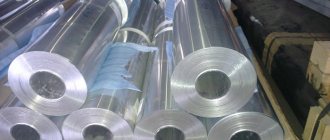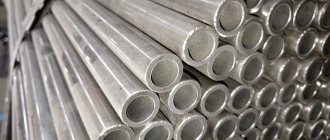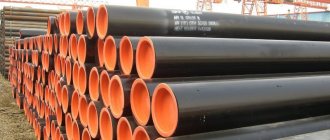Bronze is an alloy of copper and special additives that are necessary to give the metal certain technological properties. Bronze may contain the following components: Sn (tin), Mn (manganese), Be (beryllium), Pb (lead), Si (silicon), Cr (chromium), P (phosphorus), Fe (iron) and other elements.
Bronze alloy is resistant to abrasion, corrosion, and aggressive environments such as sea water. These properties are achieved by adding alloying components in certain proportions. The ratio of components is regulated by regulatory documents: GOST, industry standards, methods, enterprise standards.
Alloy classification
In accordance with the presence of alloying components in the composition, it is customary to distinguish the following types of bronzes:
- tin - the main alloying component in them is tin;
- not containing tin at all, that is, tin-free.
In addition to the composition of bronze, there is another criterion for their classification - technological parameters. Bronzes stand out:
- deformable, intended for pressure treatment;
- foundries for making castings.
Main alloying components
The main component that determines most of the technical characteristics of bronzes is copper. To give the alloy the necessary parameters, special additives are used - alloying components. One of the common alloying components contained in bronze is tin. It was from tin bronze that bells were cast and called “bell” bronze.
Also the following can be used as an alloying element:
- Be – beryllium. Increases the strength of bronze.
- Si – silicon and Zn, zinc to increase the surface abrasion resistance. These same elements increase the fluidity of bronzes, which has a positive effect on the quality of casting.
- Pb – lead. Increases the anti-corrosion properties of metal.
- Al – aluminum. Increases corrosion resistance, oxidation resistance at high temperatures and reduces metal reaction with sulfur compounds and engine exhaust products.
Brands of bronzes
Bronzes are marked with the abbreviation “Br”, as well as the addition of a letter or several letters that indicate alloying additives. The volume of alloying additives is determined by GOST standards.
Different brands of bronze have their own individual characteristics: chemical composition, technical characteristics, scope of application. By marking bronzes, you can find out what components they contain, and use special tables to determine the purpose of this alloy and its technological parameters.
Marking of alloys using the example of tin bronzes
Some grades of tin bronzes are shown in the table below. Here you can also find important technological parameters of the alloy, as well as the scope of application of each specific grade of bronze.
This table also indicates the method of bronze casting. “K” in the corresponding column means that casting was carried out in a chill mold, “P” – casting was carried out in a sand mold.
The “grade” column shows the names of the alloys. “Br” in the name of the brand means bronze, then the alloying components present in the alloy are indicated.
Based on the markings, it is clear that the metal grades listed in the table contain tin. Some contain zinc, lead and phosphorus in addition to tin.
Percentage of bronze components
The percentage of elements, as well as the chemical composition, is included in the abbreviation of the alloy grade. It does not indicate the percentage of the main element - copper, but indicates the content of all alloying elements in percentage terms.
For example, in the BrO3Ts12S5 brand the content of components is as follows:
tin – 3%;
zinc – 12%;
lead – 5%;
the remaining 80% comes from copper.
The percentage of copper in the alloy affects its color. The more copper, the brighter the golden color the bronze has. With a copper content of 50%, the color of the alloy will become white, close to the color of silver. In accordance with the tasks set, it is possible to obtain different colors of the metal by varying the percentage of alloying elements and copper.
Physicochemical characteristics
In terms of appearance, bronze, brass, copper and aluminum products have many similar features. Compared to brass, bronze products are characterized by greater resistance to abrasive wear. Copper metal has higher thermal and electrical conductivity, and if you compare bronze with aluminum, it will have a higher density.
The properties of a product are directly influenced by its chemical composition. The introduction of even a small amount of alloying substances changes the physical characteristics of the metal.
Influence of alloying components:
- tin, phosphorus and iron - increase corrosion resistance, strength and hardness;
- lead - increases the flexibility of the material for cutting and cutting;
- zinc and chromium - responsible for casting qualities and heat resistance;
- nickel, silicon, manganese and zirconium - increase elasticity and ability to undergo plastic deformation;
- beryllium - forms a protective film on the surface of products that prevents oxidation.
Some varieties of bronze alloys
The most commonly required materials are tin, beryllium, silicon and aluminum bronzes.
Tin bronze
Tin bronze contains tin as the main alloying component. May also contain phosphorus, zinc, lead, nickel, etc.
The table shows the maximum content of elements in some brands:
As can be seen from the table, the alloys contain at least 80% copper. As the volume of tin in the alloy increases, its properties also change:
- the hardness and strength of the metal increases;
- plasticity decreases;
- Impact strength decreases;
- fatigue strength increases.
One of the alloying components is P (phosphorus). A given element is called alloying if its content is more than 0.1%.
When phosphorus enters a copper alloy, it deoxidizes the copper. In addition, it is phosphorus as an alloying additive that increases the wear resistance of the metal. This composition also has a downside. Phosphorus, when its content is exceeded, reduces the ductility of the resulting metal. Therefore, when adding phosphorus as an alloying component to deformable tin bronze, it is extremely important to strictly adhere to GOST and other regulatory documents.
Another alloying component is Zn (zinc). It is added to bronze, which does not contain phosphorus. Zinc is introduced in an amount that can dissolve. Lead may often be administered along with zinc. Lead is slightly soluble; the resulting alloys BrOTsS4-4-2.5 and BrOTsS4-4-4 are solid solution crystals and undissolved inclusions of lead. The addition of lead increases the anti-friction properties of the metal and the ability to cut it. However, lead as an alloying element reduces some other mechanical properties of the resulting metal.
Ni (nickel) can also be added. The element increases strength, ductility and deformability.
Beryllium bronze
This type includes tin-free dispersion-hardening alloys of copper and beryllium. This means that the solubility of the alloying element directly depends on temperature. Quenching is carried out from a single-phase region, that is, directly from the melt. It is very important to select the correct process temperature to use. It is this value that determines how well the melt will transform into a solid solution and how homogeneous it will be, which is important for giving the metal specific properties. The optimal hardening temperature is 760-800 °C. When the temperature increases above the specified range, there is a possibility of an increase in the metal grain size and, as a result, a decrease in technological parameters. Temperatures below the specified range do not allow the solid solution to be saturated with beryllium to the required extent.
The cooling rate of the solution should be at least 30-60 degrees per second. This is necessary so that the components in the solid solution do not begin to decompose. Sometimes Ni (nickel) and Co (cobalt) can be introduced as an additional alloying additive to reduce the cooling rate limit. These additives increase the stability of the solid solution in case of supercooling. Magnesium can be used for the same purposes. Metal bending
The following alloys are most often used in industry and production:
- BrB2 – with a beryllium content of 2%;
- MNB – copper-nickel-beryllium alloy, beryllium content does not exceed 0.8%
- IBC is a copper-cobalt-beryllium ratio with the same beryllium content as in MNB.
Both BrB2, MNB and MKB have high ductility and strength, and are easily subject to bending and stretching, as well as other types of plastic deformation.
The content of components in some beryllium bronzes is shown in the table:
Silicon Bronze
This tin-free alloy contains Cu (copper) in the amount of 80%, Zn (zinc) 20% and Si (silicon) about 3% and 1% manganese (BrKMts-3-1), and is resistant to compressive and tensile deformation. High mechanical and antifriction properties, ductility at low temperatures allow this alloy to be used for antifriction parts, springs, bearings, etc.
Silicon-containing alloys have another useful property - fluidity. They are widely used in the casting of complex parts. Also, due to its composition, bronze does not produce a spark upon impact.
Aluminum bronze
Aluminum bronze contains aluminum as an alloying component. Aluminum content can reach 12%. Depending on the aluminum content, the properties of the resulting metal also change.
For example, single-phase bronze, in which up to 9.4% aluminum is easily deformed by pressure at any temperature. This is due to its high plasticity. An example of such a brand is BrA7. Laser cutting of metal
The addition of aluminum as an alloying component significantly increases the strength of the metal and its resistance to corrosion in difficult conditions: salt water, high humidity, etc. This type of metal is used for oil platforms located at sea.
Al also has a significant effect on the thermal conductivity of the metal. As the aluminum content increases, the thermal conductivity of the resulting metal decreases when compared with copper in its pure form. Adding even 10% Al reduces the thermal conductivity of copper from 390-401 W/(m*K) to 75 W/(m*K). Adding additional alloying components further reduces thermal conductivity.
Thus, the following conclusions can be drawn: the technological parameters of bronzes depend on which alloying components and in what ratio were introduced during the manufacture of the metal. The main component is copper, the percentage of alloying additives is regulated by GOSTs and other regulatory documents.
Scope of application
Rolled bronze is in demand in many areas of human activity. Its popularity is due to its wide range and large selection of standard sizes of metal products. The most common types of rolled bronze metal:
- Bushings are consumables in mechanical engineering and instrument making. They are used as plain bearings for household appliances and various equipment, including pumps, steam turbines, rolling mills, gearboxes, and generator sets. In the engineering industry, they are used to equip heavy equipment, excavators, and bulldozers.
- Depending on the diameter, circles are supplied in coils and in the form of profiles. They are used in the production of components and spare parts for mechanisms and installations in the railway, automotive, and engineering industries.
- Bronze pipes have good throughput. They are indispensable in creating water supply systems, heating systems, as well as fuel systems, wastewater and water collection systems, ventilation and climate control systems. Manometric tubes are used in the manufacture of spring products for precision instruments.
- The wire is used for semi-automatic welding, and is also used for the production of welding electrodes, windings, cables, and wires. It is used to make jewelry and bijouterie, woven mesh for filtering and purifying gases, liquids and suspensions, dividing materials with a free-flowing structure into fractions.
- The tape acts as a semi-finished product for elastic sensitive elements in instrument making. Due to its visual appeal, rolled bronze has found application in the creation of interior and architectural decor.
- Rods with a square and hexagonal cross-section are used as blanks for fasteners and hardware - bolts, nuts, screws, rivets.
Where and how it is used
Bronze alloys are in demand; their range of applications ranges from critical components of equipment and infrastructure to the sphere of beauty and design.
Industry, housing and communal services
Each sphere requires alloys with different properties:
- Casting varieties, especially aluminum with its dense structure, are equipment material for working under water or in an aggressive environment (for example, acid).
- Deformable types are ordered by manufacturers of high-precision instruments.
- Electrical products are made from thermally and electrically conductive beryllium bronze. As the hardest and most plastic, it is used for membranes, springs, and tools.
- It, being immune to the amplitudes of dynamic loads, becomes the filling of on-board computers of aircraft and automobile industry products.
- For bearings operating under increased loads, lead alloy is chosen. Its advantages: ultra-low abrasion, impact resistance, strength, refractoriness.
- Products of complex shapes are made from zinc or silicon compounds. Their melts are particularly fluid; the cooled product is difficult to compress and does not spark during mechanical manipulation.
Despite the high cost, important household parts are made from bronze: fittings, taps, mixers.
Bronze is indispensable in water supply as an “inhibitor” of corrosion, bacteria, and other dangerous microflora.
What is bronze
Among the metals, bronze cannot be found:
- This is not a metal, but a copper-based alloy.
- Copper as an essential component is supplemented by tin (more often than others), silicon, aluminum, lead, beryllium, and other elements.
Bronze











